
Silver (Ag) is a chemical element of the periodic table, located in the group 11 and the period 5, and is having the atomic number 47. It is a soft, ductile, malleable, lustrous white transition metal, whose name comes from the Anglo-Saxon word “seolfor”.
On periodic table
| group | ⇨ | 1 | 2 | 3 | 4 | 5 | 6 | 7 | 8 | 9 | 10 | 11 | 12 | 13 | 14 | 15 | 16 | 17 | 18 |
| period | ⇩ | ||||||||||||||||||
| 1 | 1 H 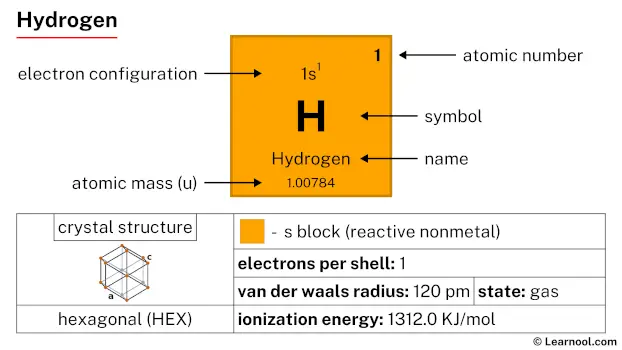 Hydrogen |
2 He  Helium |
|||||||||||||||||
| 2 | 3 Li  Lithium |
4 Be 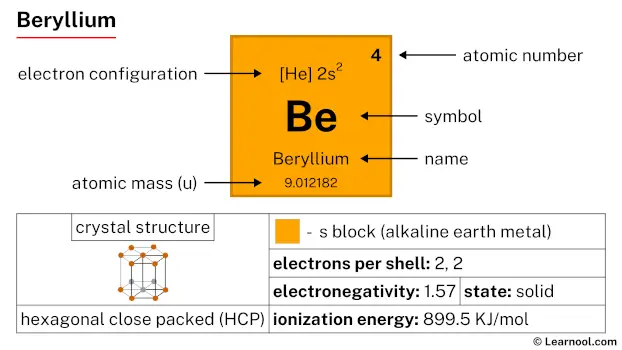 Beryllium |
5 B 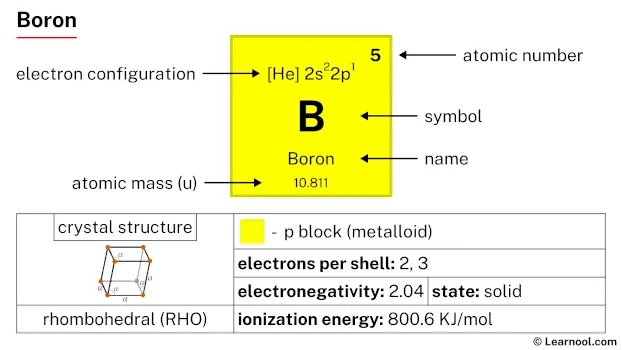 Boron |
6 C  Carbon |
7 N 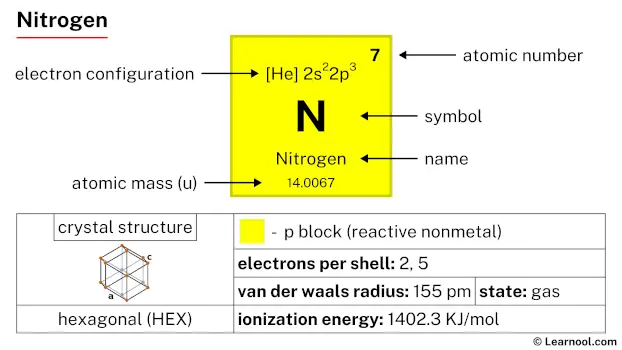 Nitrogen |
8 O 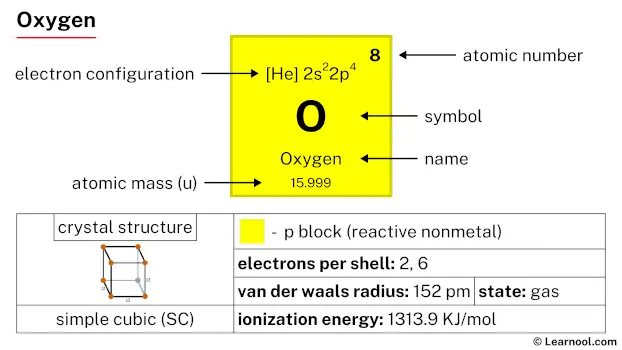 Oxygen |
9 F 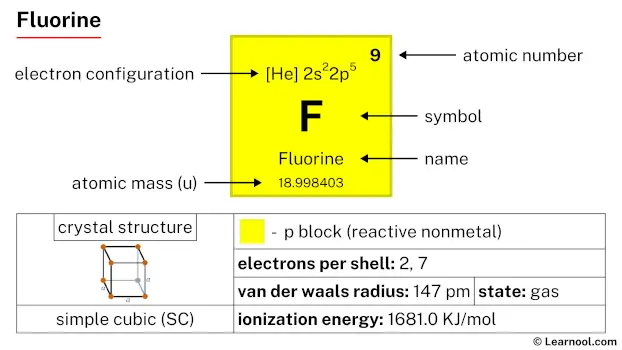 Fluorine |
10 Ne 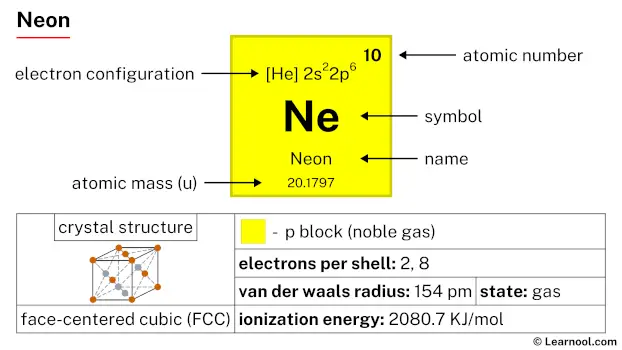 Neon |
|||||||||||
| 3 | 11 Na 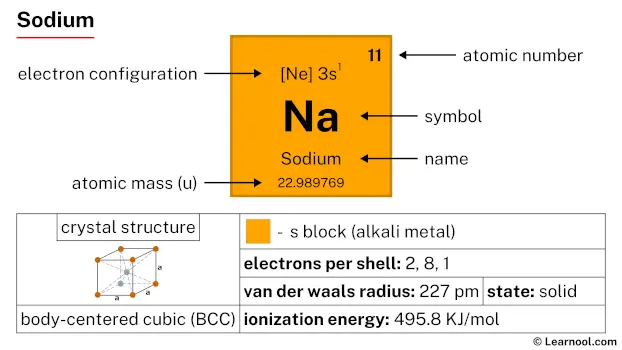 Sodium |
12 Mg 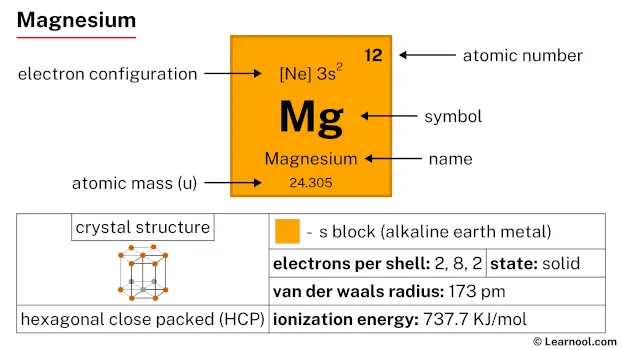 Magnesium |
13 Al  Aluminium |
14 Si Silicon |
15 P 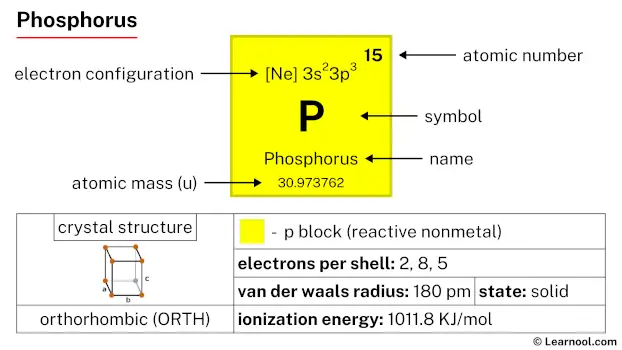 Phosphorus |
16 S 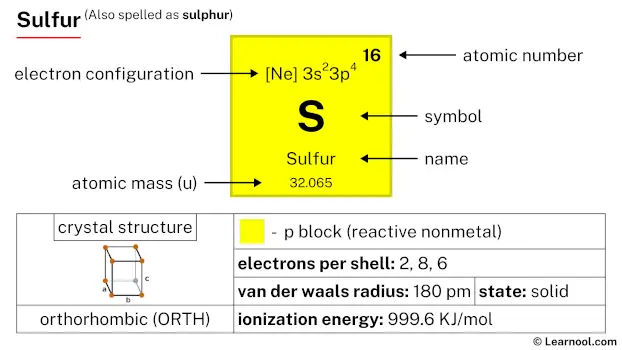 Sulfur |
17 Cl 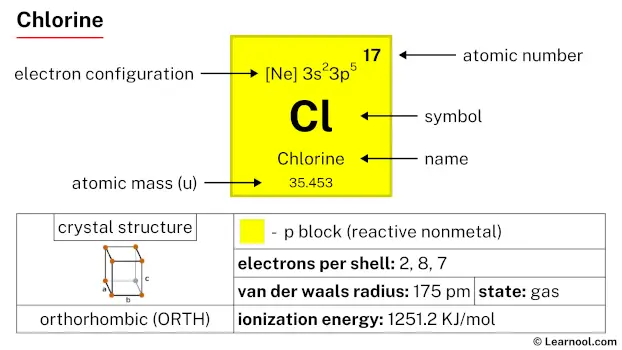 Chlorine |
18 Ar 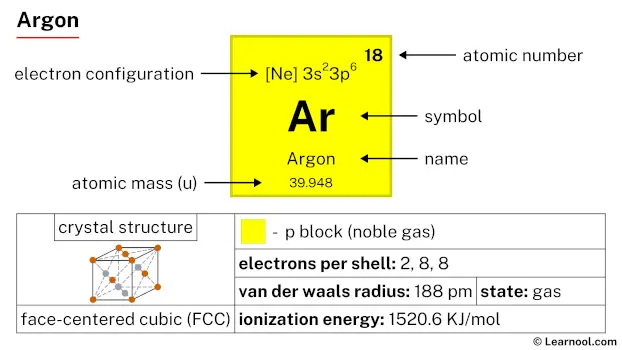 Argon |
|||||||||||
| 4 | 19 K 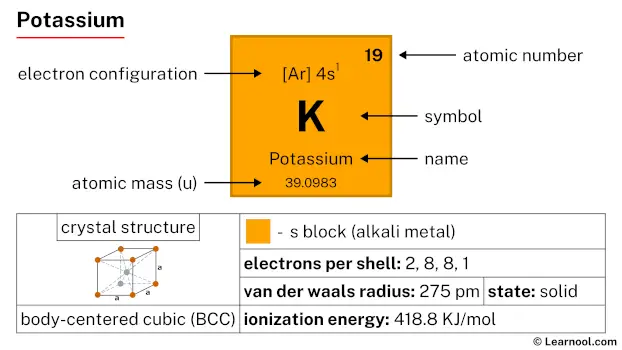 Potassium |
20 Ca 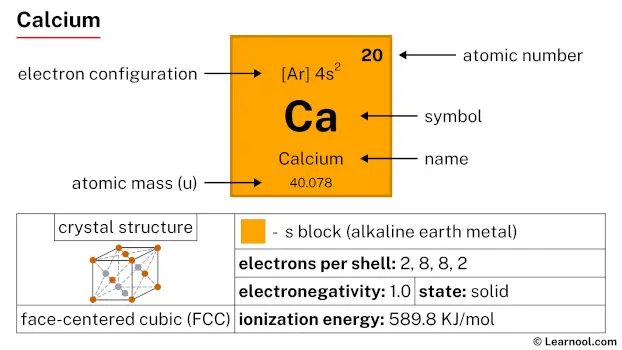 Calcium |
21 Sc 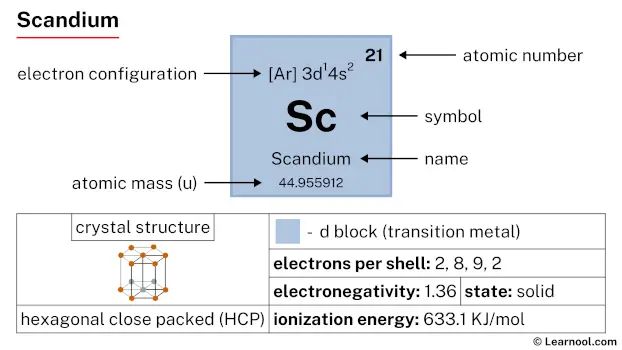 Scandium |
22 Ti 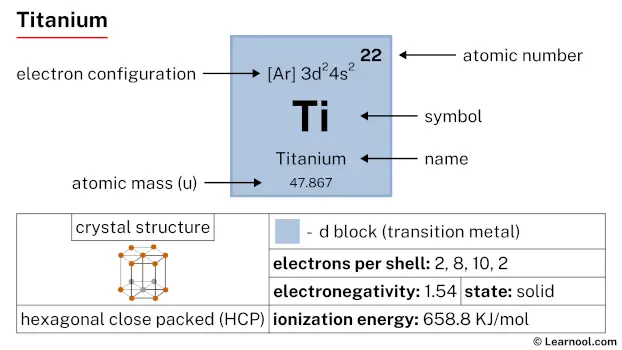 Titanium |
23 V 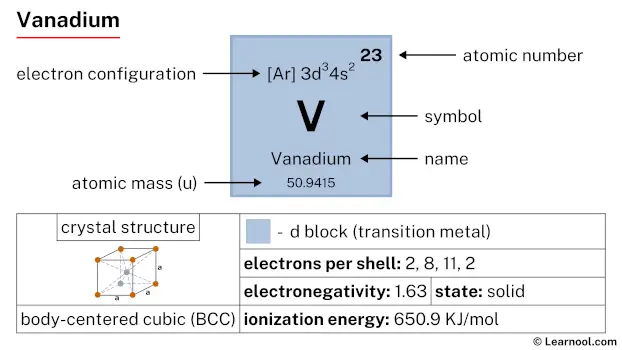 Vanadium |
24 Cr 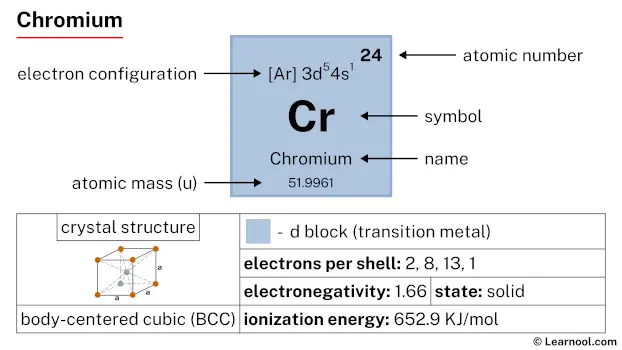 Chromium |
25 Mn 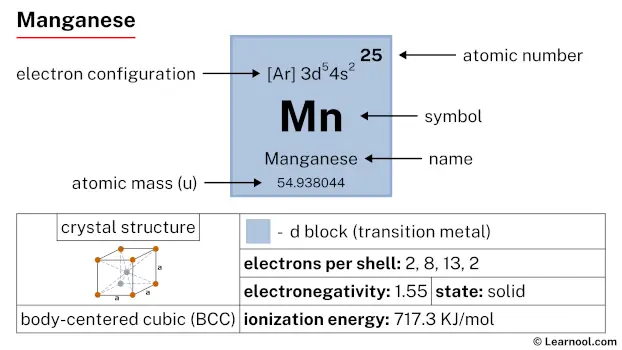 Manganese |
26 Fe 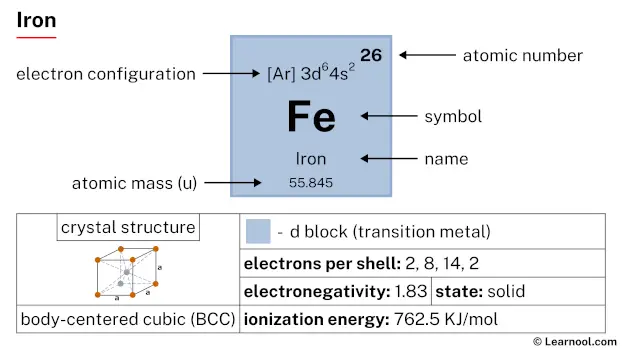 Iron |
27 Co 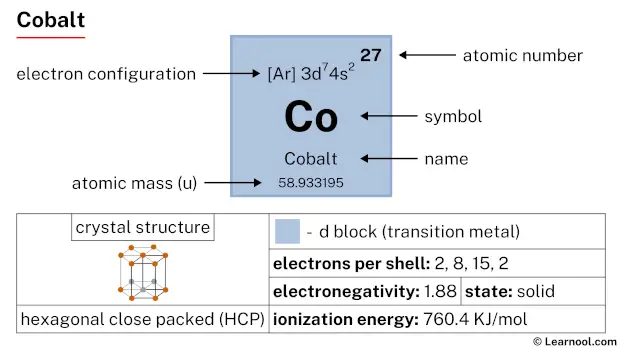 Cobalt |
28 Ni 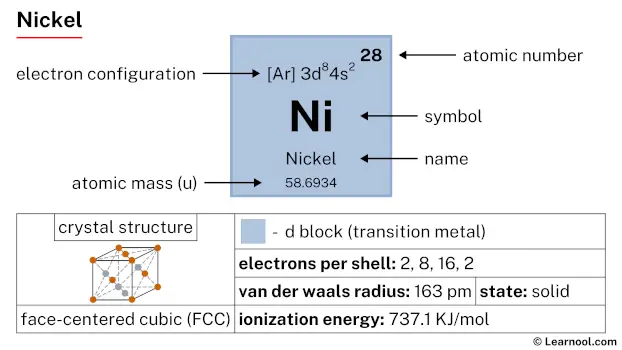 Nickel |
29 Cu 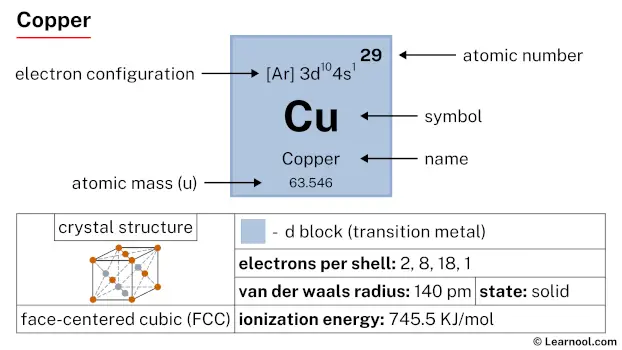 Copper |
30 Zn  Zinc |
31 Ga 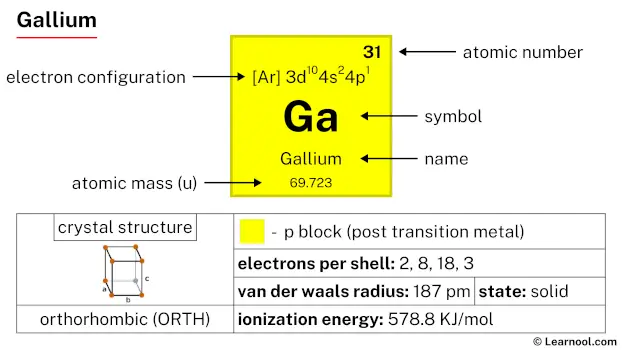 Gallium |
32 Ge 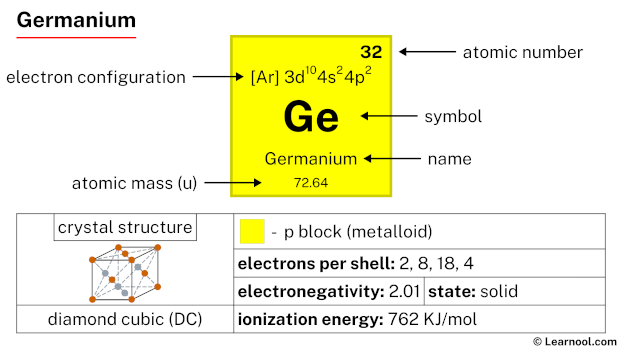 Germanium |
33 As 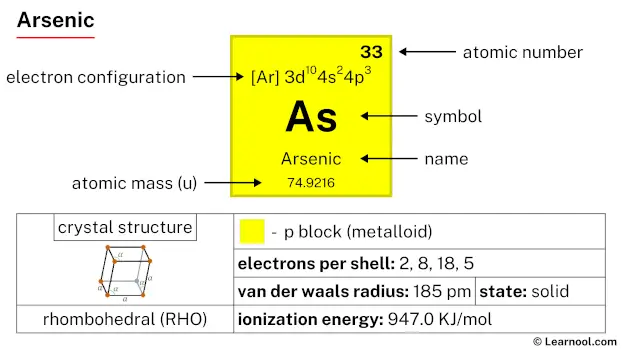 Arsenic |
34 Se 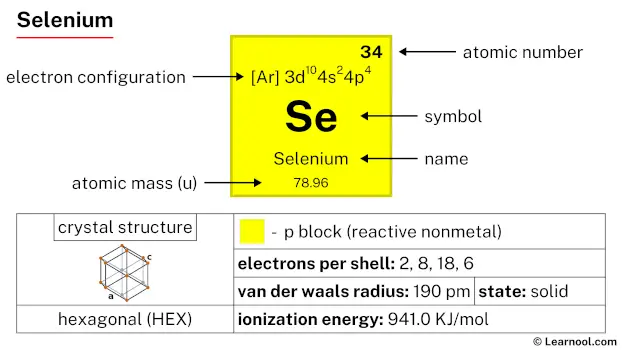 Selenium |
35 Br 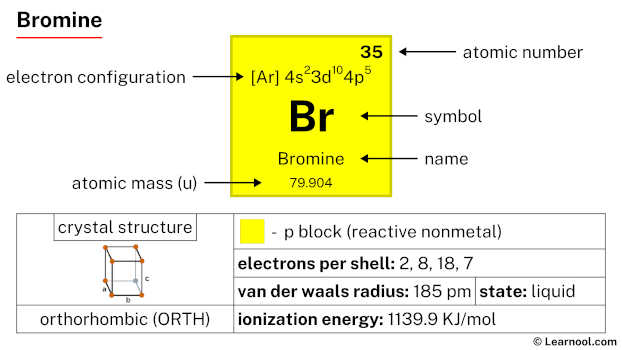 Bromine |
36 Kr  Krypton |
|
| 5 | 37 Rb 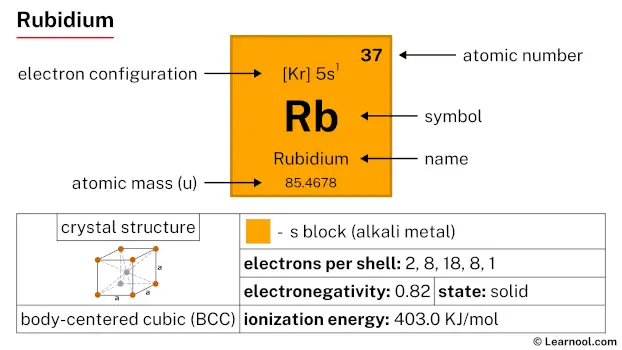 Rubidium |
38 Sr 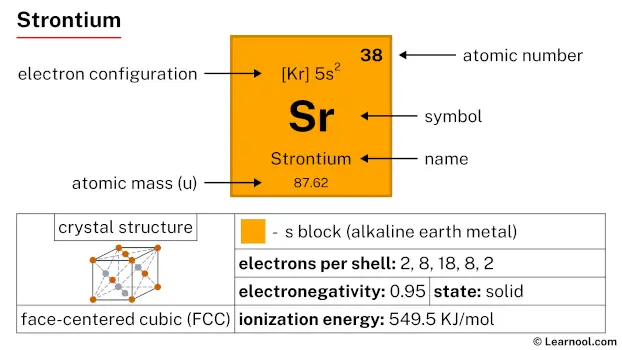 Strontium |
39 Y 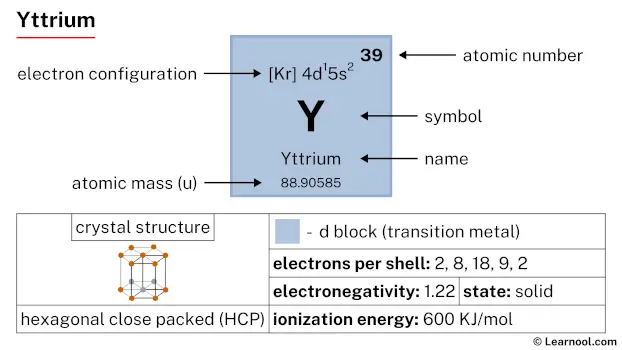 Yttrium |
40 Zr 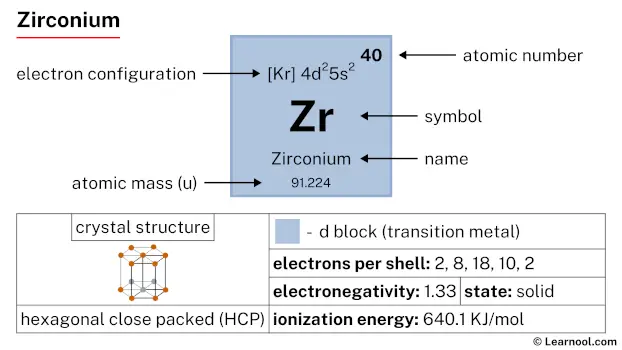 Zirconium |
41 Nb 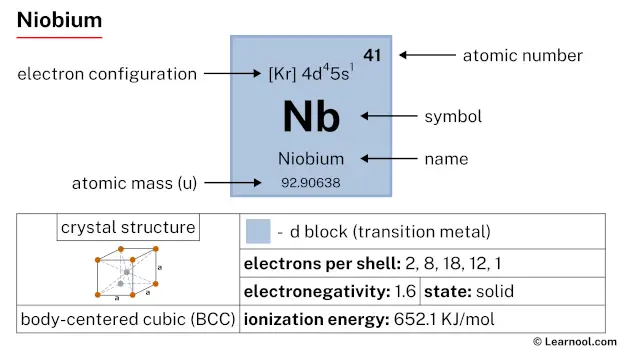 Niobium |
42 Mo 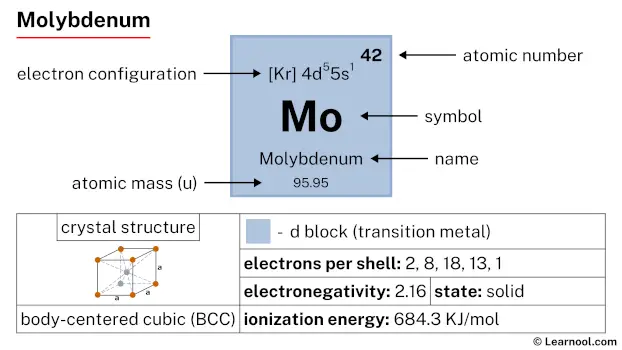 Molybdenum |
43 Tc 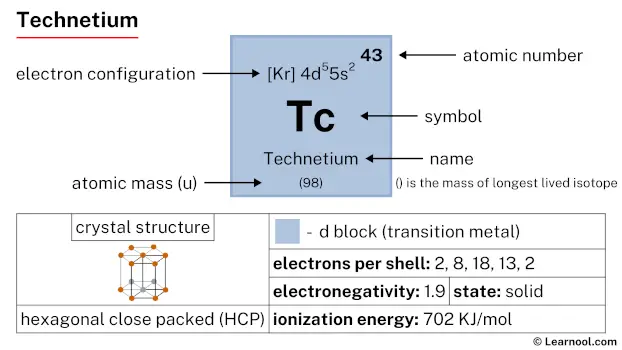 Technetium |
44 Ru 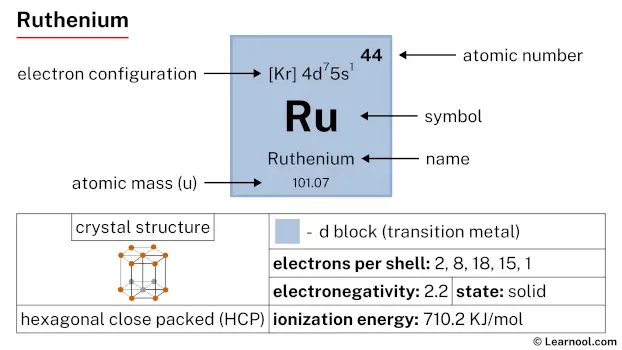 Ruthenium |
45 Rh 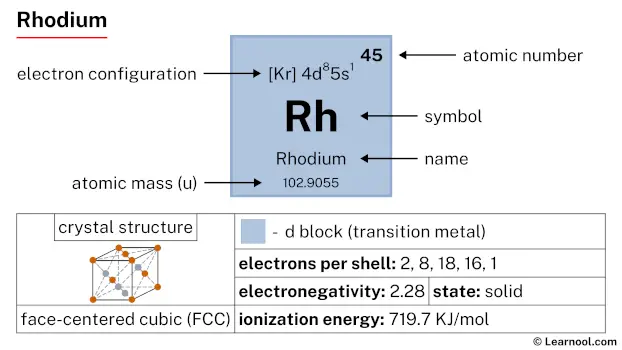 Rhodium |
46 Pd  Palladium |
47 Ag Silver |
48 Cd 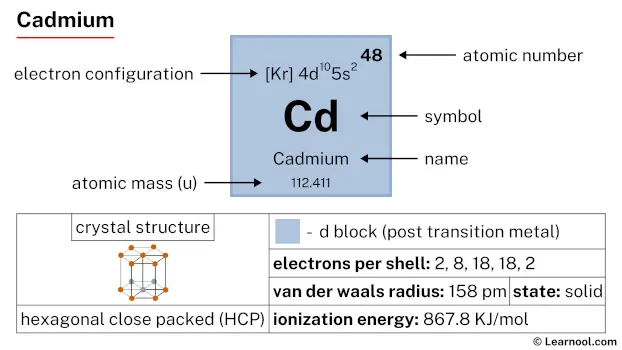 Cadmium |
49 In 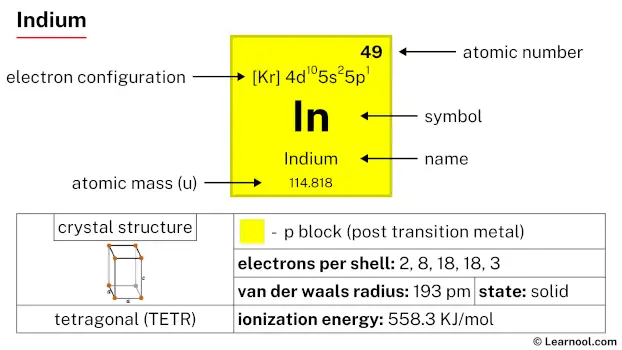 Indium |
50 Sn 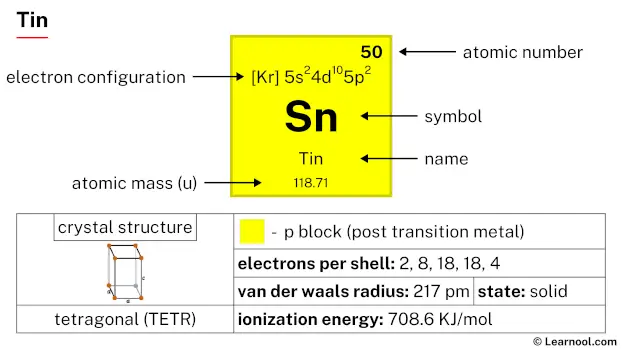 Tin |
51 Sb 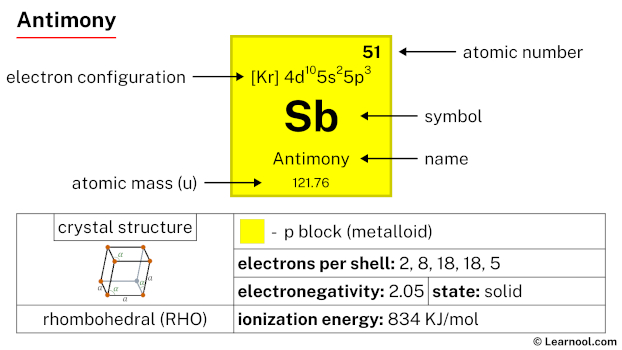 Antimony |
52 Te 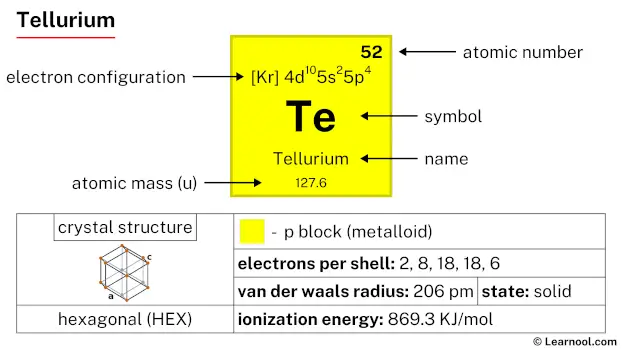 Tellurium |
53 I 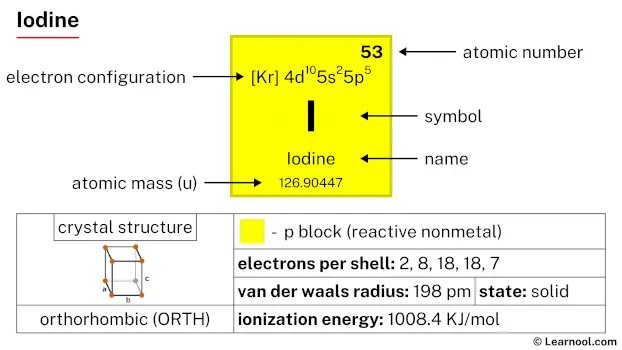 Iodine |
54 Xe 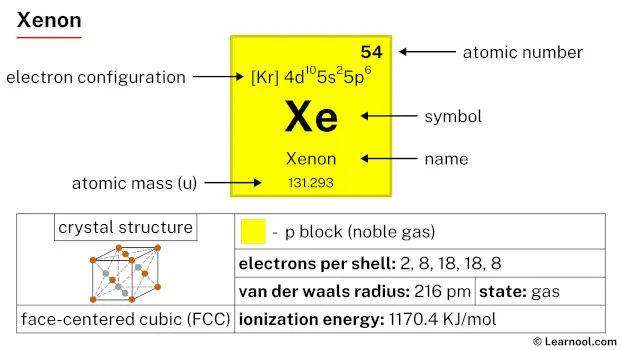 Xenon |
|
| 6 | 55 Cs 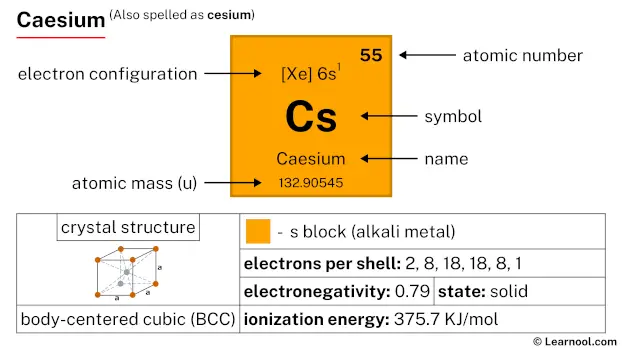 Caesium |
56 Ba 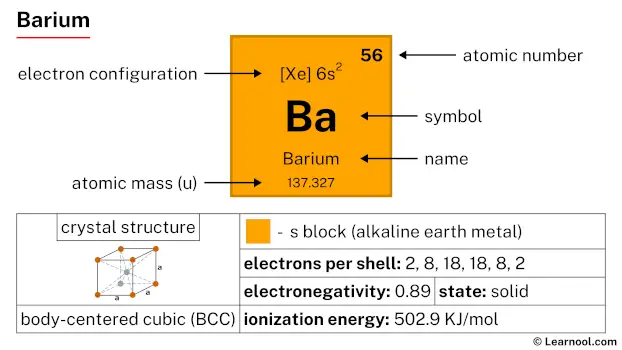 Barium |
72 Hf 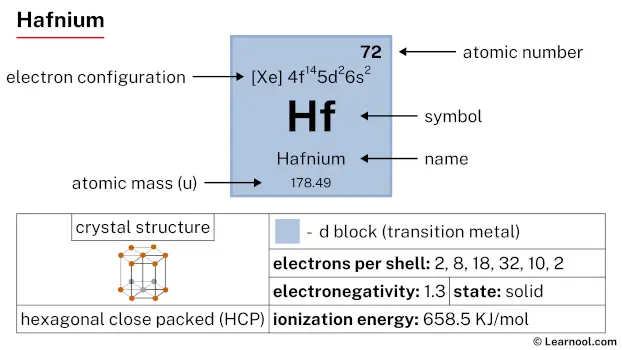 Hafnium |
73 Ta 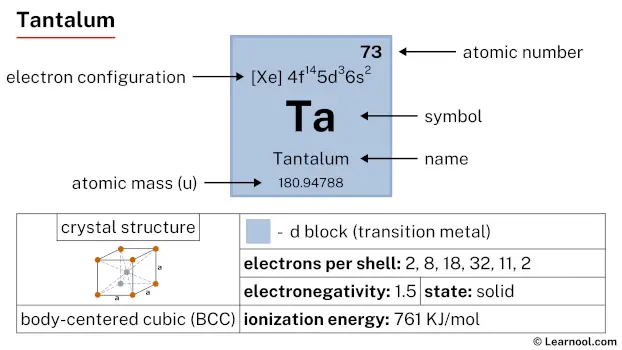 Tantalum |
74 W 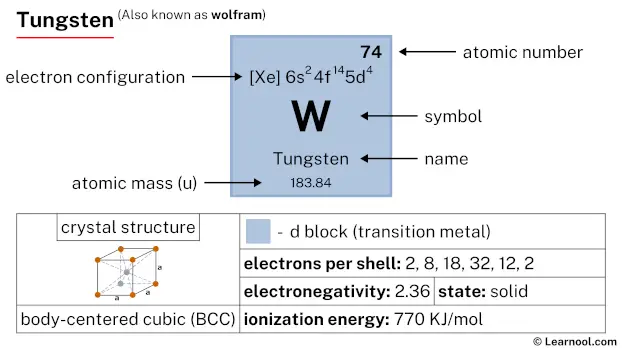 Tungsten |
75 Re 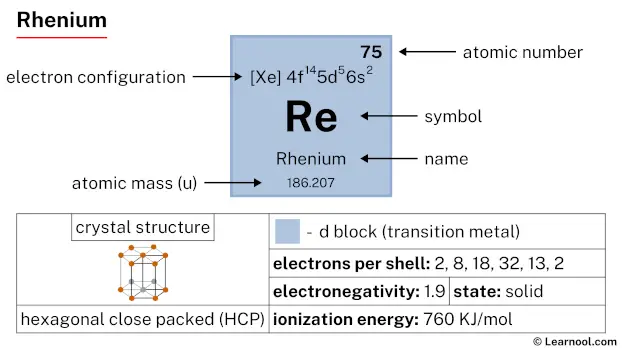 Rhenium |
76 Os 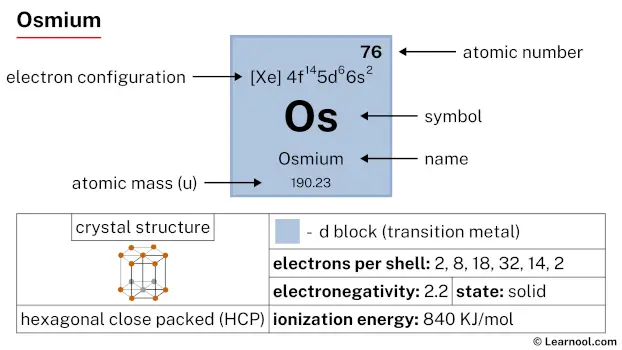 Osmium |
77 Ir 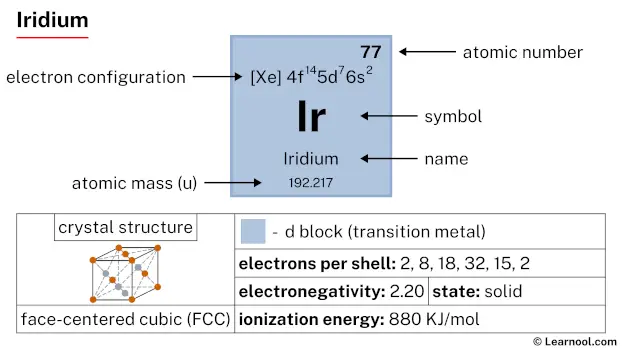 Iridium |
78 Pt  Platinum |
79 Au  Gold |
80 Hg 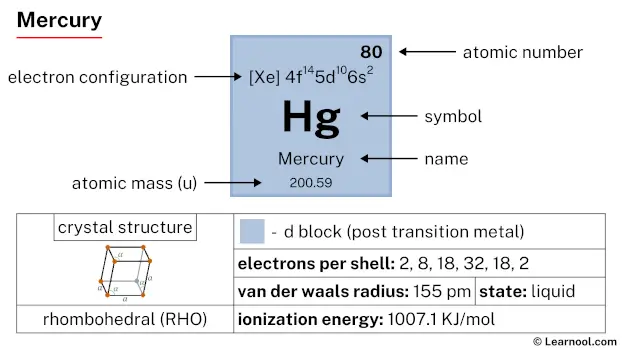 Mercury |
81 Tl 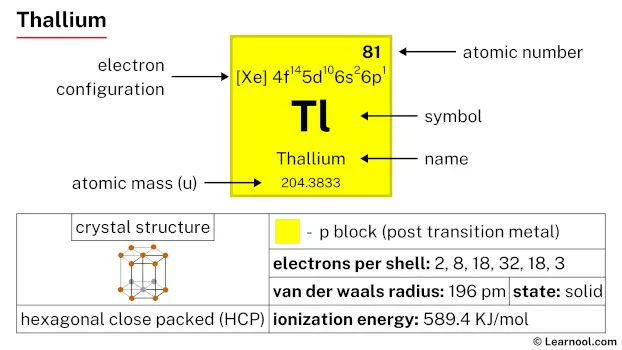 Thallium |
82 Pb  Lead |
83 Bi 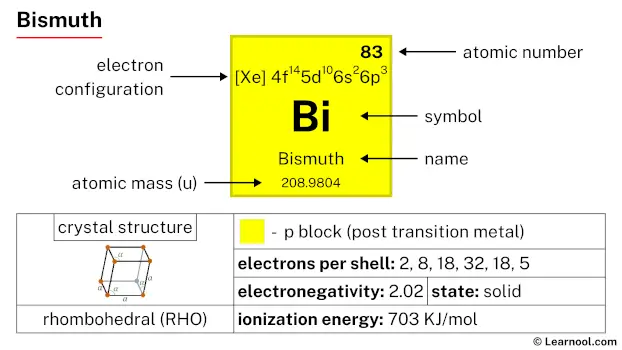 Bismuth |
84 Po 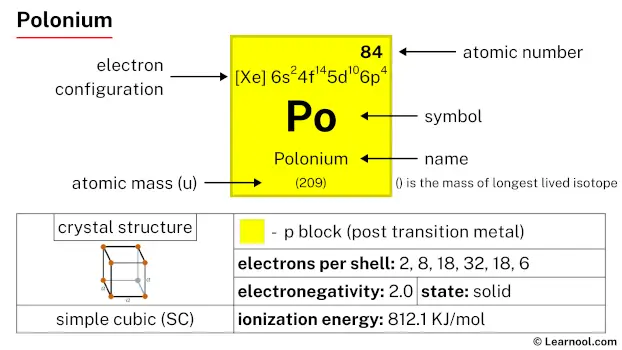 Polonium |
85 At 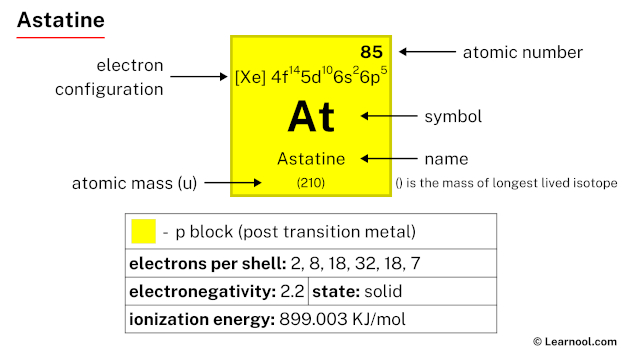 Astatine |
86 Rn 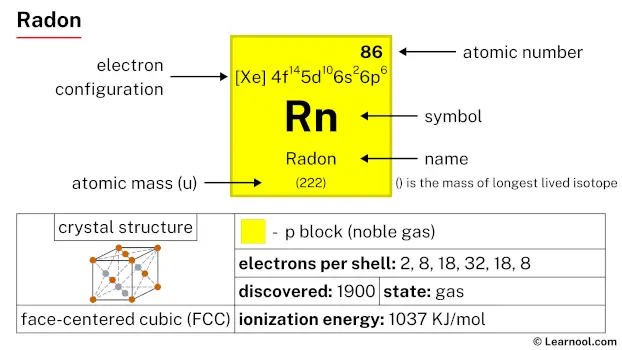 Radon |
||
| 7 | 87 Fr 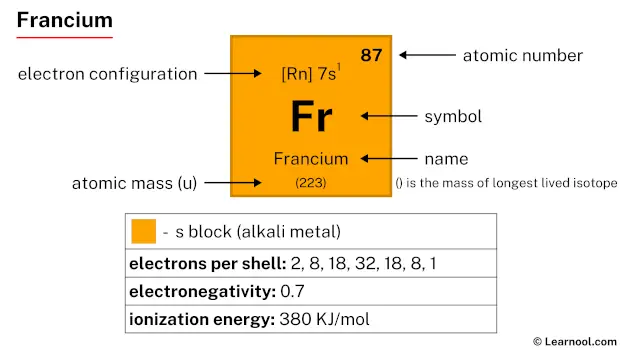 Francium |
88 Ra 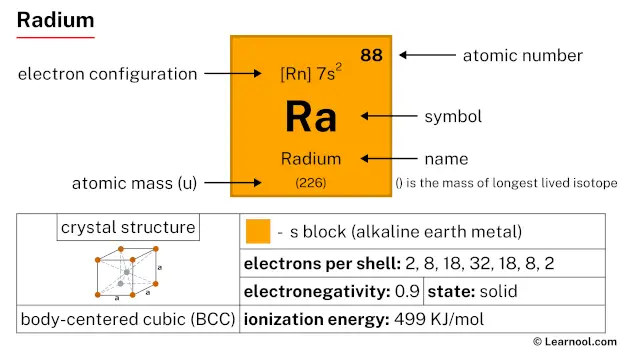 Radium |
104 Rf 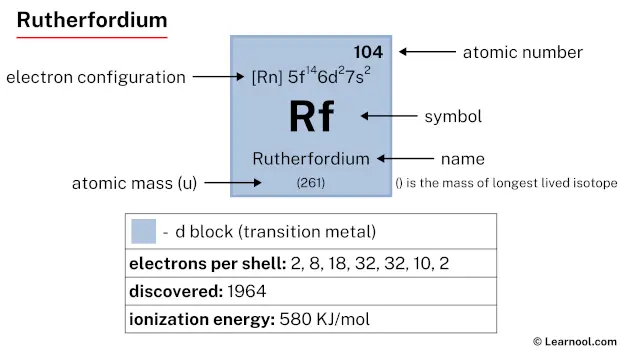 Rutherfordium |
105 Db 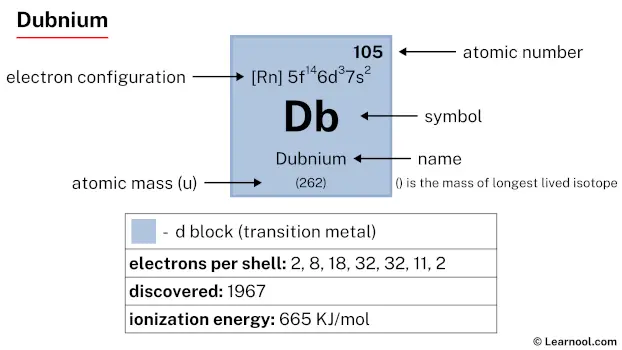 Dubnium |
106 Sg 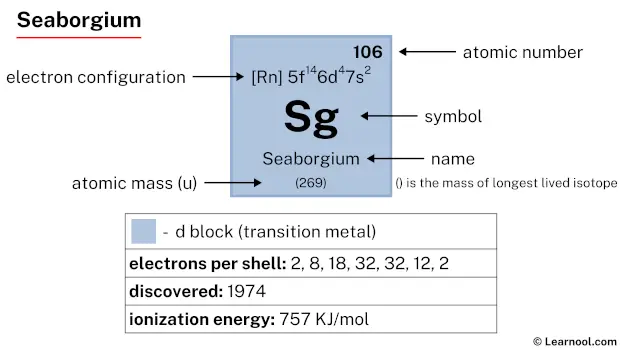 Seaborgium |
107 Bh 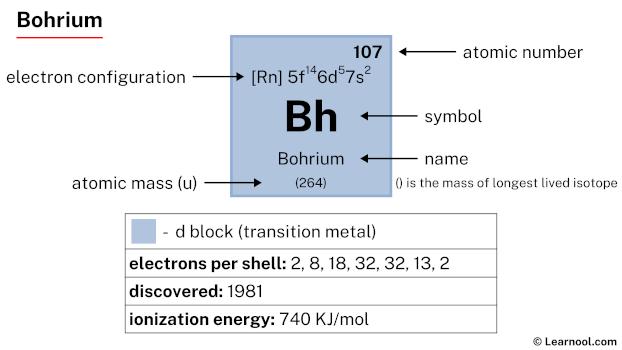 Bohrium |
108 Hs 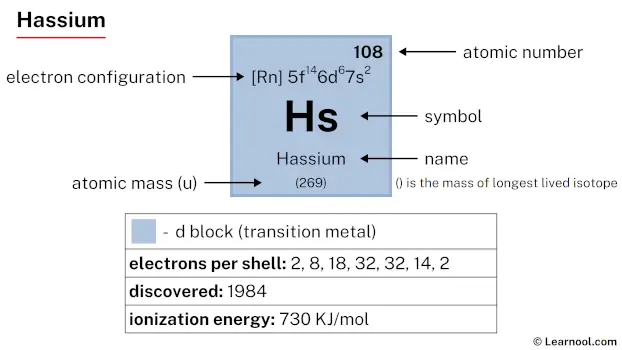 Hassium |
109 Mt 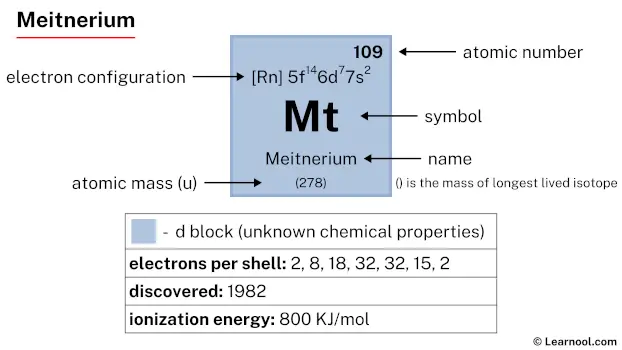 Meitnerium |
110 Ds 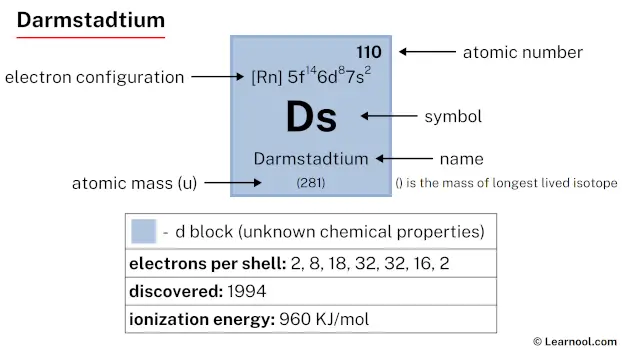 Darmstadtium |
111 Rg 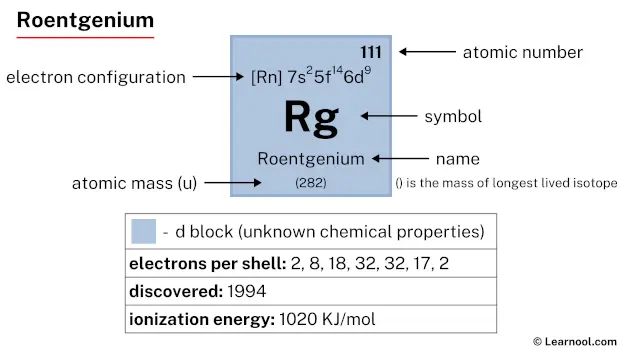 Roentgenium |
112 Cn  Copernicium |
113 Nh 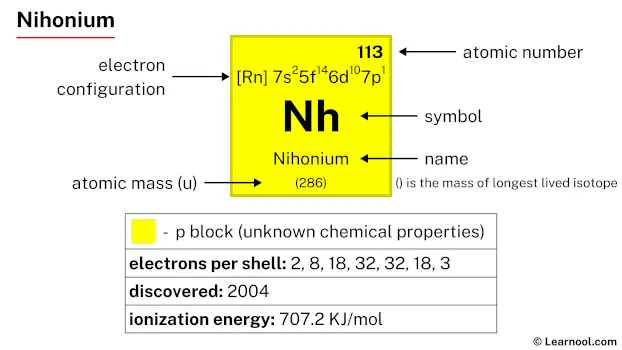 Nihonium |
114 Fl 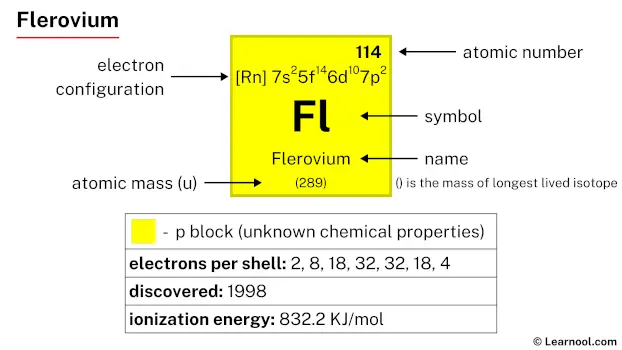 Flerovium |
115 Mc 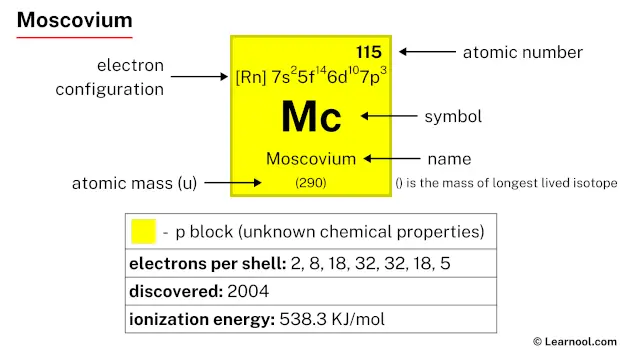 Moscovium |
116 Lv 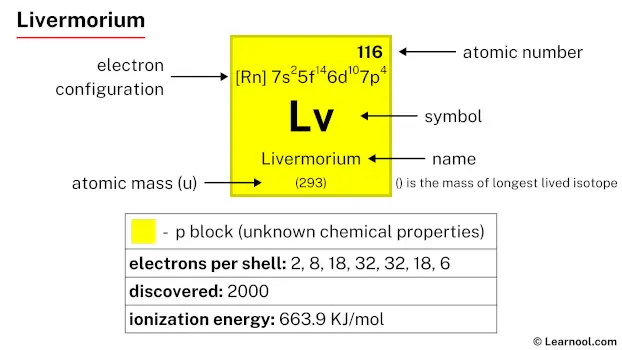 Livermorium |
117 Ts 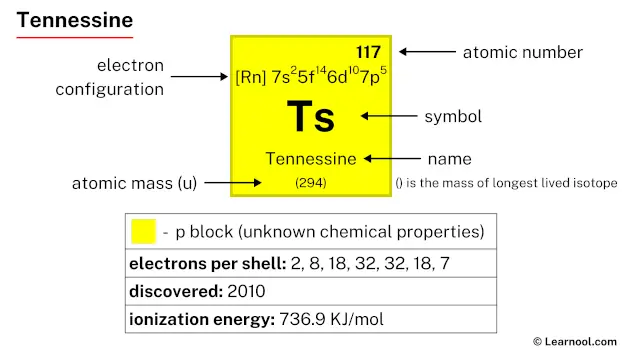 Tennessine |
118 Og 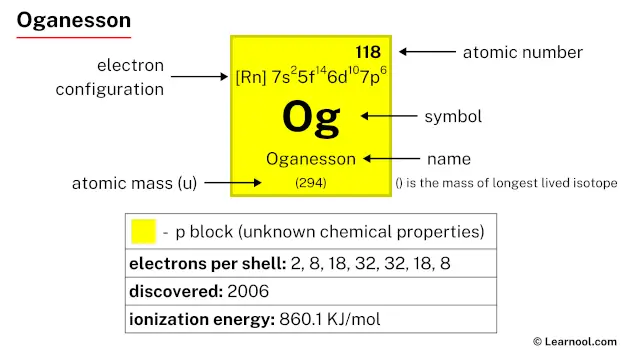 Oganesson |
||
| 57 La 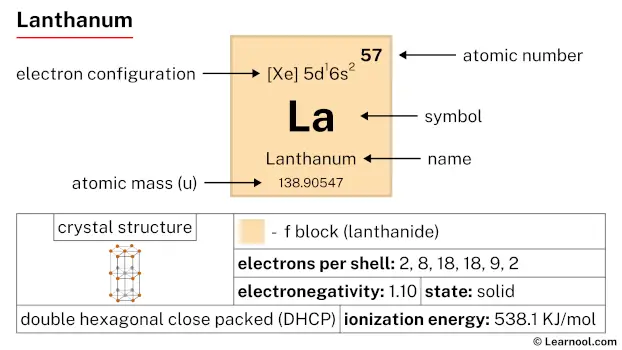 Lanthanum |
58 Ce 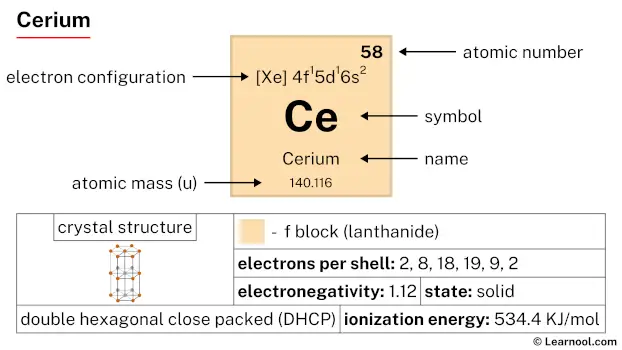 Cerium |
59 Pr 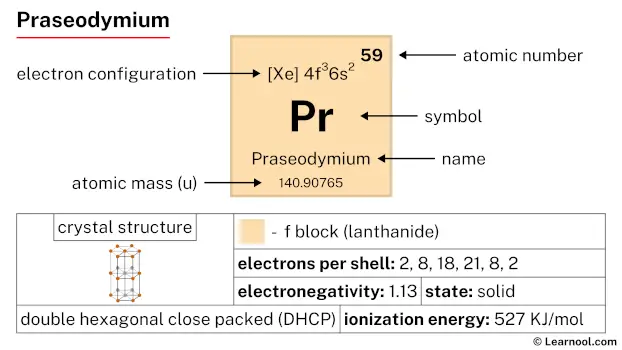 Praseodymium |
60 Nd 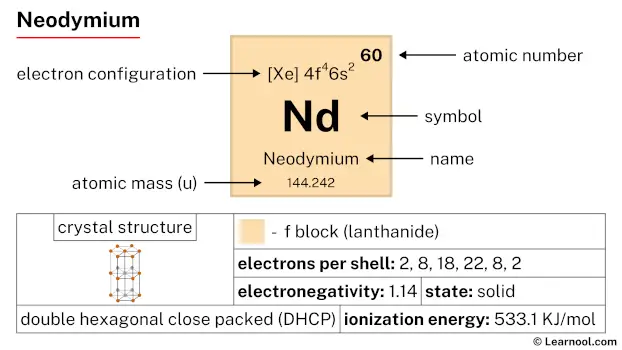 Neodymium |
61 Pm 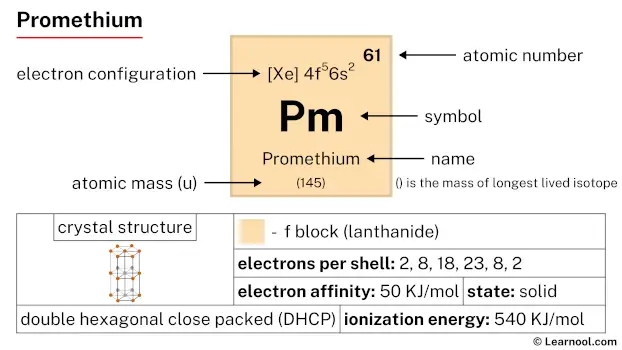 Promethium |
62 Sm 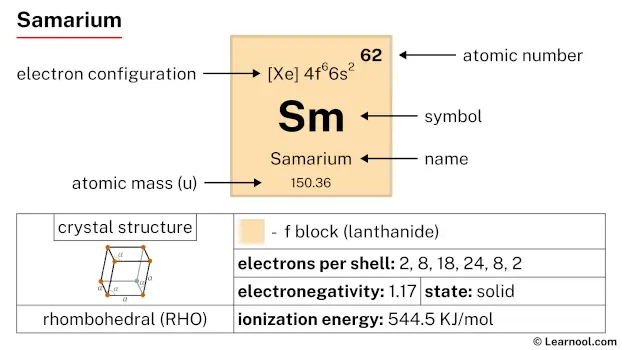 Samarium |
63 Eu 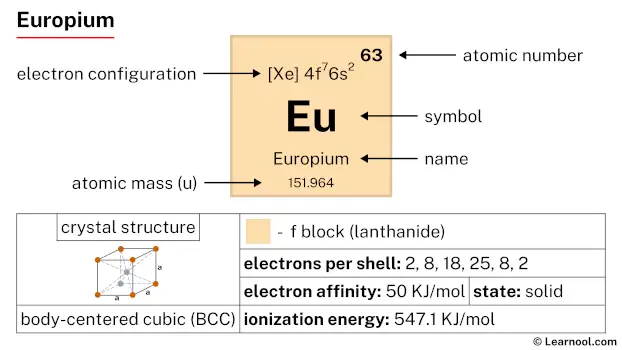 Europium |
64 Gd 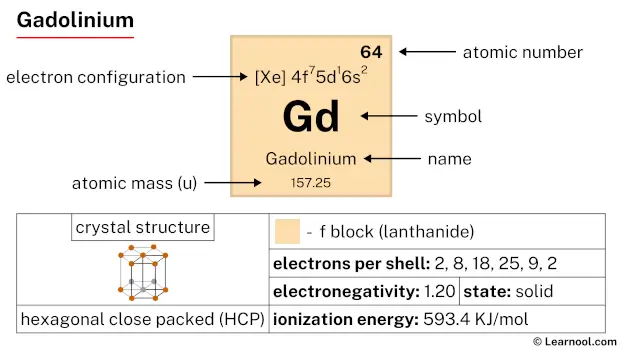 Gadolinium |
65 Tb 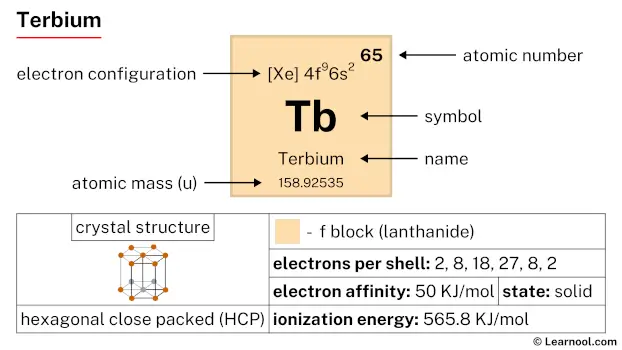 Terbium |
66 Dy 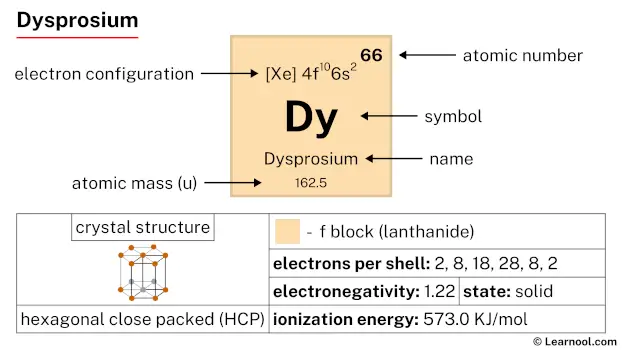 Dysprosium |
67 Ho 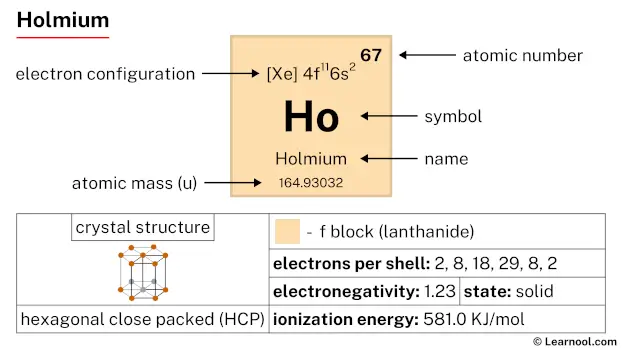 Holmium |
68 Er 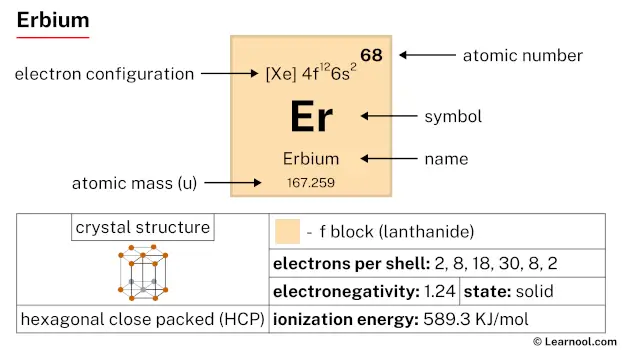 Erbium |
69 Tm 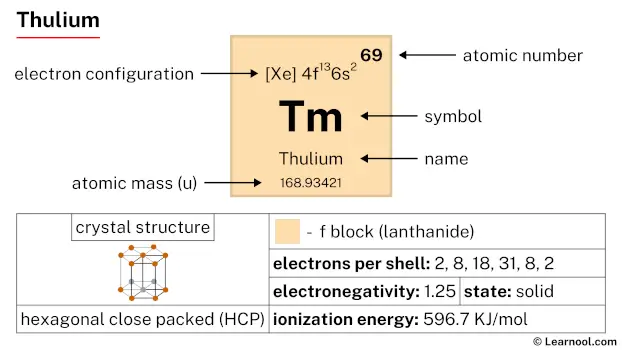 Thulium |
70 Yb 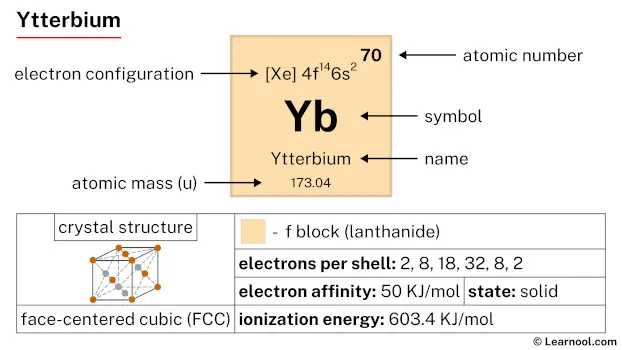 Ytterbium |
71 Lu 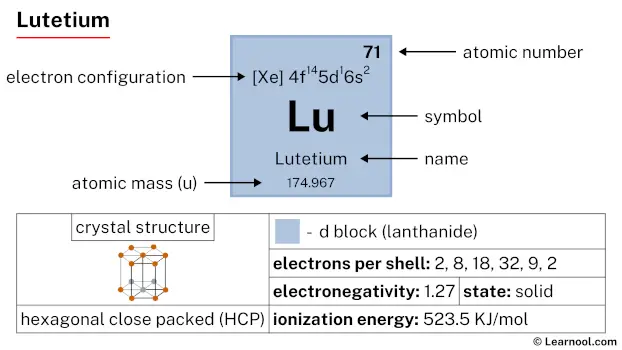 Lutetium |
|||||
| 89 Ac 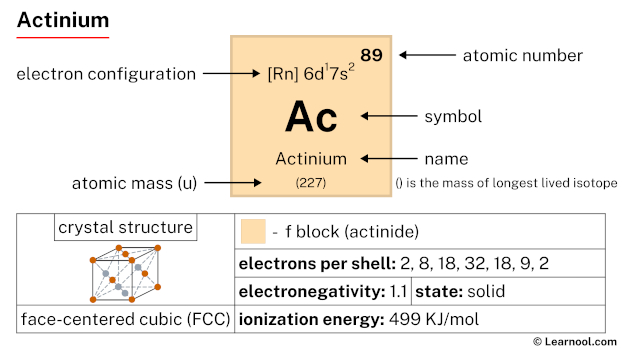 Actinium |
90 Th 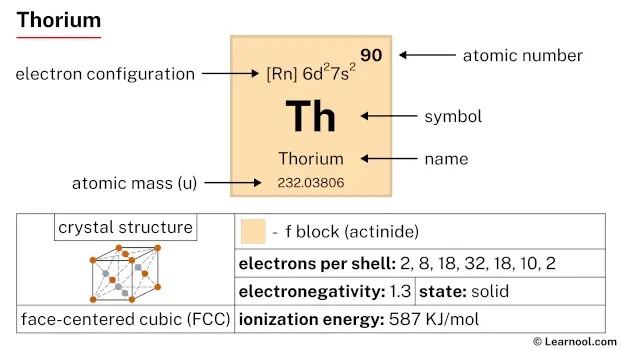 Thorium |
91 Pa 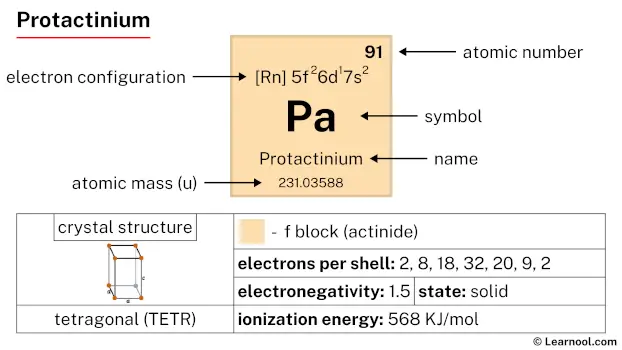 Protactinium |
92 U 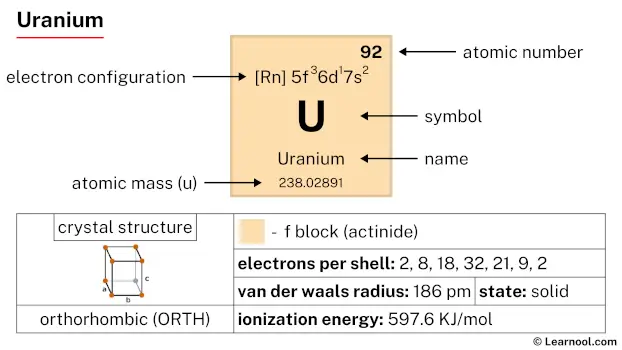 Uranium |
93 Np 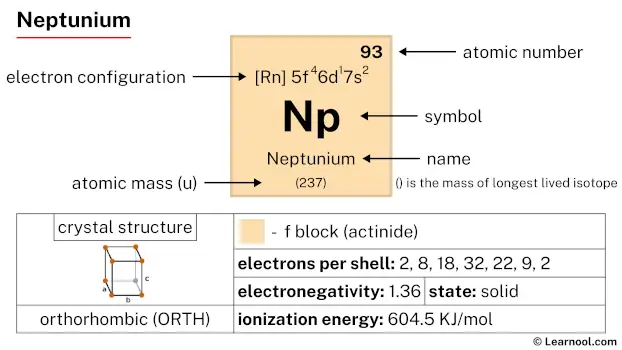 Neptunium |
94 Pu 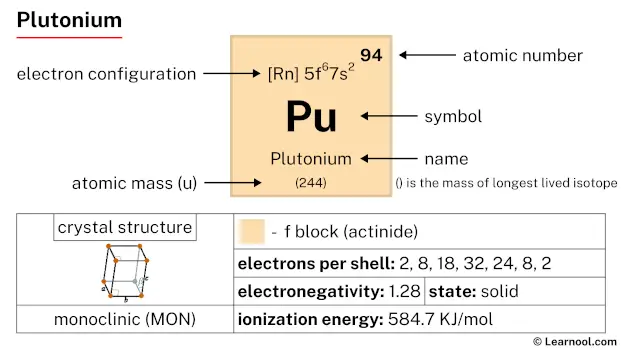 Plutonium |
95 Am  Americium |
96 Cm 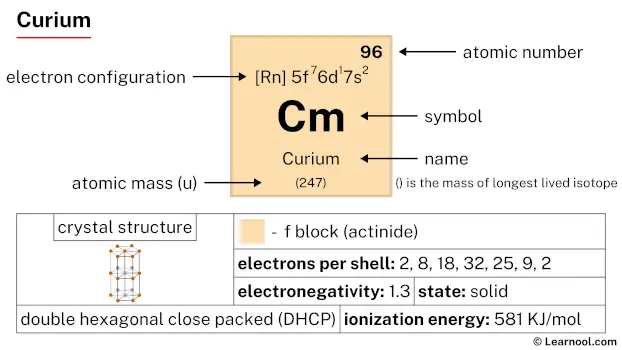 Curium |
97 Bk 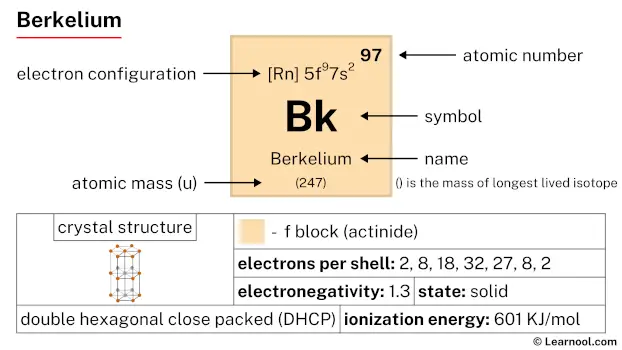 Berkelium |
98 Cf 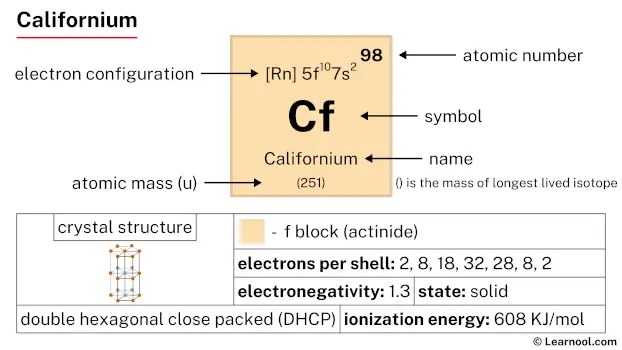 Californium |
99 Es 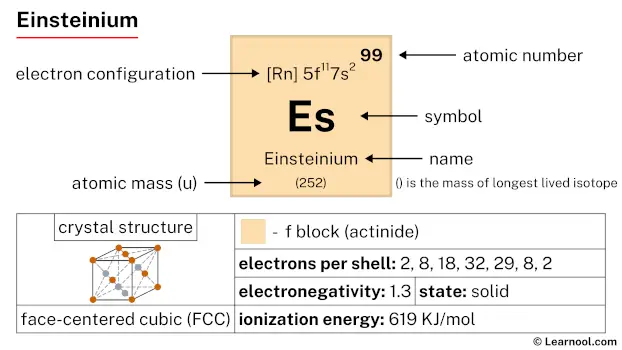 Einsteinium |
100 Fm 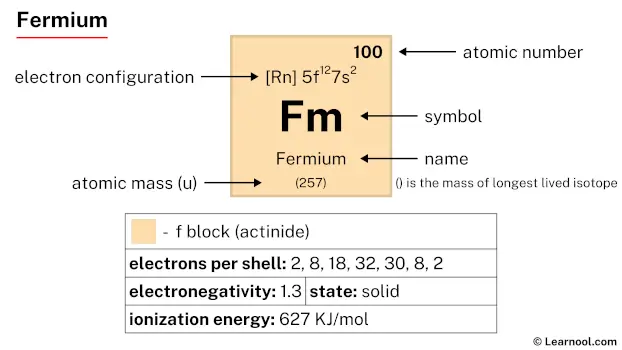 Fermium |
101 Md 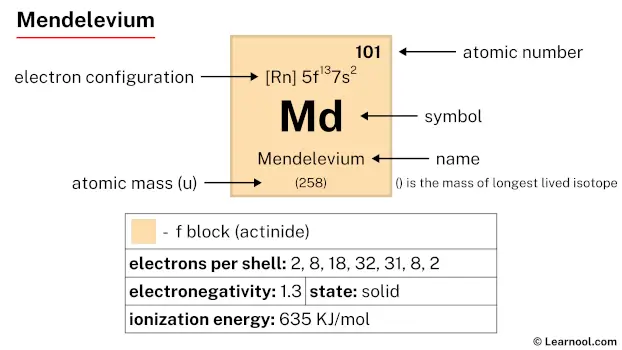 Mendelevium |
102 No 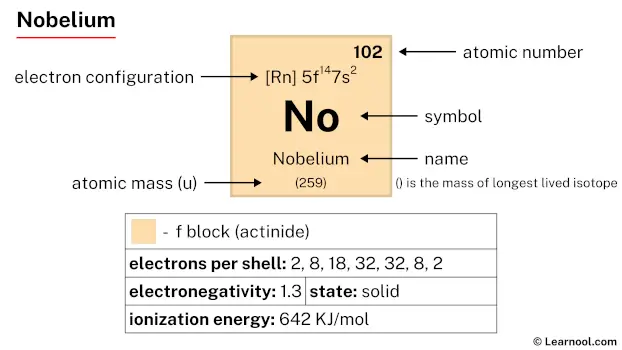 Nobelium |
103 Lr 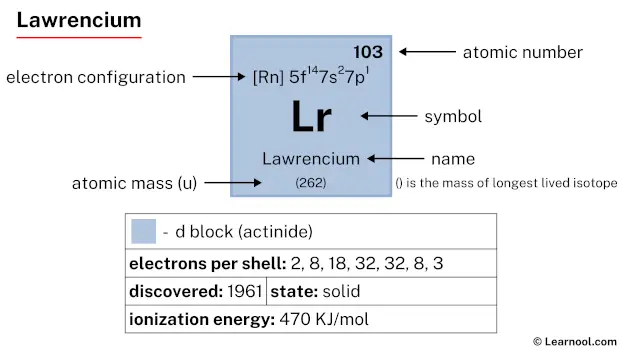 Lawrencium |
|||||
| – d block |
Silver is a d-block element, situated in the eleventh column and the fifth row of the periodic table. Its atomic number is 47 and its symbol is Ag.
Element information
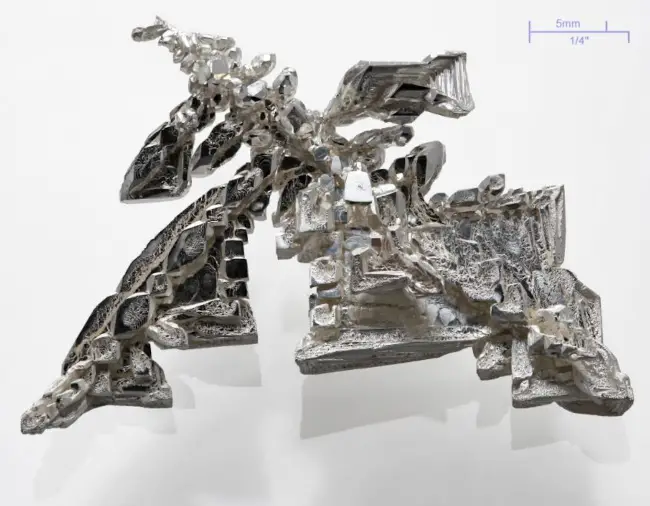 |
|
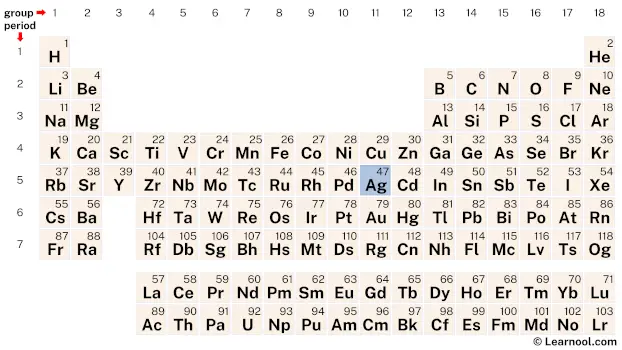 |
|
| Origin of name | name comes from Anglo-Saxon word “seolfor” |
| Symbol | Ag |
| Atomic number (Z) | 47 |
| Atomic mass | 107.8682 u |
| Block | d-block |
| Group | 11 |
| Period | 5 |
| Classification | Transition metal |
| Atomic radius | 144 pm |
| Covalent radius | 145±5 pm |
| Van der Waals radius | 172 pm |
| Melting point | 961.78 ℃, 1763.2 ℉, 1234.93 K |
| Boiling point | 2162 ℃, 3924 ℉, 2435 K |
| Electron configuration | [Kr] 4d10 5s1 |
| Learn how to write: Silver electron configuration | |
| Electrons per shell | 2, 8, 18, 18, 1 |
| Learn how to draw: Silver Bohr model | |
| Crystal structure | Face-centered cubic (fcc) |
| Phase at r.t | Solid |
| Density near r.t | 10.49 g/cm3 |
| Main isotopes | Silver-107, Silver-109 |
| Natural occurrence | Primordial |
| Oxidation state | +1 |
| Electronegativity (Pauling scale) | 1.93 |
| Protons Neutrons Electrons |
47 61 47 |
| Learn how to find: Silver protons neutrons electrons | |
| CAS number | 7440-22-4 |
| Discovered | before 5000 BC |
History
The history of silver dates back to ancient times, with evidence of its use dating back to around 3000 BC in what is now modern-day Turkey. It is believed that silver was first discovered and extracted from lead ore by the Sumerians around 4000 BC. Throughout history, silver has been highly valued for its beauty and rarity, as well as for its practical applications.
In ancient times, silver was used as a form of currency and was highly valued for its rarity and beauty. The Greeks and Romans both used silver coins for trade, and the metal was also used to make jewelry and decorative objects. During the Middle Ages, silver continued to be used as currency, and it was also used to make religious objects, such as chalices and crosses.
In the 16th century, silver was discovered in the Americas, and vast amounts of the metal were mined and shipped to Europe. This influx of silver had a major impact on the global economy, leading to inflation and the growth of international trade. The demand for silver continued to grow, and it became an important metal for use in industry, medicine, and photography.
Today, silver is still highly valued for its beauty and rarity, and it continues to be used for a wide range of applications, including jewelry, silverware, electrical and electronic equipment, mirrors, and solar panels. The history of silver is rich and varied, and the metal continues to play an important role in the world economy and in our daily lives.
Occurrence and production
Silver is a rare, naturally occurring element that is found in the earth’s crust. The primary sources of silver are silver ores, such as argentite (Ag2S), which is the most important silver ore, and silver sulfide (Ag2S2O3), which is also known as the mineral acanthite. Other important sources of silver include galena (PbS), pyrargyrite (Ag3SbS3), and proustite (Ag3AsS3).
The production of silver involves several methods, including mining, refining, and recycling. The mining process involves extracting the silver ore from the ground, crushing it, and then separating the silver from other minerals. The refining process involves heating the silver ore to a high temperature, which melts the metal and separates impurities from the pure silver. The resulting silver is then cast into bars, ingots, or coins. Silver can also be produced through recycling, which involves melting down scrap silver and refining it to produce pure silver.
Silver is also produced as a byproduct of mining other metals, such as copper, lead, and zinc. In fact, approximately two-thirds of the world’s silver production comes from these types of mines. The refining of these metals results in the production of silver, which is separated from the other metals through a series of chemical and electrolytic processes.
Properties
Silver is a soft, ductile and malleable metal with a shiny white color that is highly reflective.
It has the highest electrical conductivity of all elements and is highly resistant to oxidation and corrosion.
Silver has a melting point of 961.78 ℃ and a boiling point of 2162 ℃.
It is a good thermal conductor and has a density of 10.49 g/cm3.
Silver is a noble metal and is highly resistant to acids and alkalis.
It has a strong affinity for sulfur, which gives it its characteristic tarnish.
Silver is a rare element, accounting for only 0.079 parts per million of the Earth’s crust.
Isotopes of silver have a range of uses in industry, medicine, and scientific research.
Silver has a very high reflectivity for both visible and infrared light, making it useful in optical applications such as mirrors, lenses, and solar panels.
Silver is used in the production of jewelry, coins, and silverware due to its beauty, durability, and tarnish resistance.
Silver is a key component in the manufacture of photographic films and papers due to its sensitivity to light.
It is used as a catalyst in a range of chemical reactions, including the production of formaldehyde, ethylene oxide, and hydrogen cyanide.
Applications
Medicine
Silver has been used in medicine for centuries due to its antimicrobial properties. It is used in wound dressings, catheters, and other medical devices to help prevent infection.
Water purification
Silver is effective at killing bacteria and other microorganisms, which makes it useful in water purification systems. Silver ions are added to water filters to help kill harmful bacteria and keep the water safe to drink.
Electronics
Silver is an excellent conductor of electricity, which makes it useful in the electronics industry. It is used in printed circuits, touch screens, and other electronic components.
Photography
Silver has been used in photography since the 19th century. It is used in the development of photographic film and paper, and in the production of photographic emulsions.
Jewelry
Silver is a popular metal for making jewelry due to its beauty and affordability. It is also easy to work with, which allows jewelry makers to create intricate designs.
Mirrors
Silver is used to make mirrors because it is highly reflective. A thin layer of silver is applied to the back of a glass pane, which creates a highly reflective surface.
Coins
Silver has been used to make coins for thousands of years. It is still used today in many countries to make commemorative coins and bullion coins.
Solar panels
Silver is used in the production of solar panels. It is used to make the conductive strips that help transport electricity from the solar cells to the rest of the system.
Antiques
Silver has been used to make decorative objects and household items for centuries. Antique silverware, candlesticks, and other decorative objects are highly prized by collectors.
Clothing
Silver has been added to clothing to create antimicrobial textiles that can help prevent the growth of bacteria and fungi. This can be useful in medical settings or for people with certain skin conditions.
Interesting facts
The chemical symbol for silver, Ag, comes from the Latin word for silver, “argentum.”
Silver has the highest electrical conductivity of any element, making it useful in a variety of electrical applications.
The largest silver nugget ever found weighed 2750 pounds and was discovered in Mexico in the late 1800s.
Silver has been used for medicinal purposes for thousands of years due to its antibacterial properties.
Silver tarnishes when exposed to air and sulfur, which led to the invention of the term “silver lining” to describe a hopeful or positive aspect of an otherwise negative situation.
Silver has been used as a form of currency for thousands of years, with the earliest known silver coins dating back to around 600 BCE.
Silver has a unique property where it can absorb up to 22 times its own weight in hydrogen gas, making it useful for storing and transporting hydrogen.
Silver is a relatively rare element, making up only 0.08 parts per million of the Earth’s crust.
Related
More elements
External links
- https://www.rsc.org/periodic-table/element/47/silver
- https://en.wikipedia.org/wiki/Silver
- https://www.britannica.com/science/silver
- https://pubchem.ncbi.nlm.nih.gov/element/Silver
- https://education.jlab.org/itselemental/ele047.html
- https://www.chemicool.com/elements/silver.html
- https://www.livescience.com/37040-silver.html
- https://www.ducksters.com/science/chemistry/silver.php
Deep
Learnool.com was founded by Deep Rana, who is a mechanical engineer by profession and a blogger by passion. He has a good conceptual knowledge on different educational topics and he provides the same on this website. He loves to learn something new everyday and believes that the best utilization of free time is developing a new skill.
